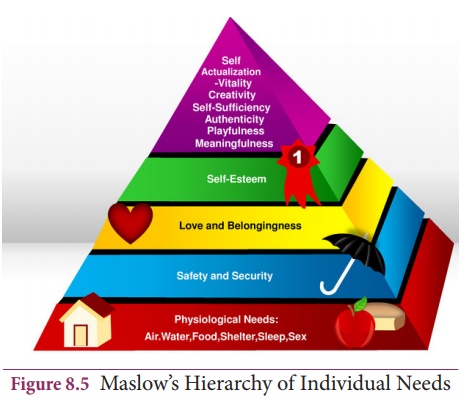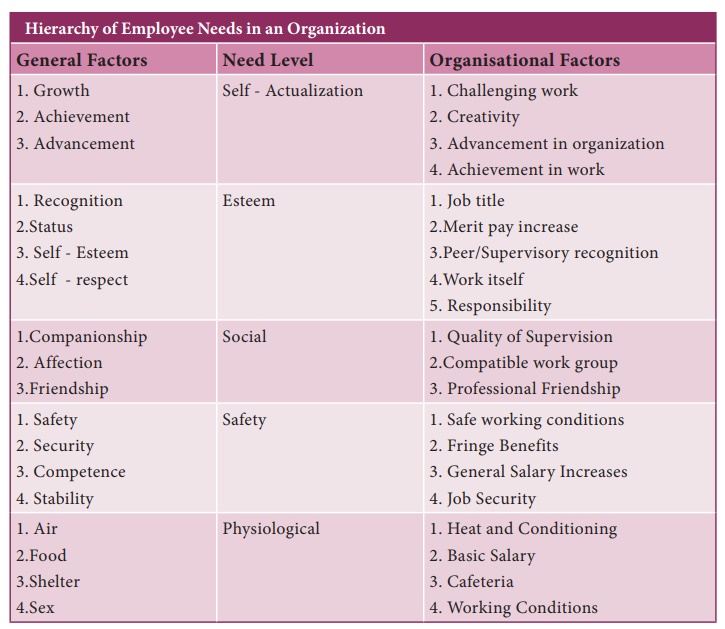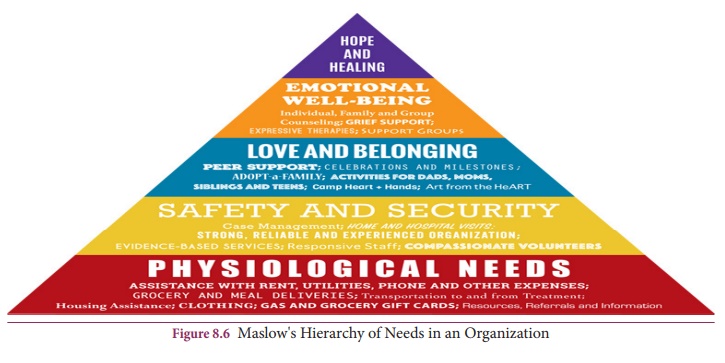Theories of motivation - MaslowŌĆÖs Hierarchy of Needs Theory | 12th Office Management and Secretaryship : Chapter 8 : Motivation
Chapter: 12th Office Management and Secretaryship : Chapter 8 : Motivation
MaslowŌĆÖs Hierarchy of Needs Theory
MaslowŌĆÖs Hierarchy of Needs Theory
MaslowŌĆÖs
hierarchy of needs is a description of the needs that motivate human behavior.
In 1943, Abraham Maslow proposed five different kinds of human needs, beginning
with the most basic: survival.
Physiological
needs, such as food and shelter, are followed by needs related to safety. Next,
there are needs of love and belonging. Fourth, human have needs of esteem, such
as the need for being respected. The final need in the hierarchy is the need
for self-actualisation (fulfilling oneŌĆÖs potential). The hierarchy suggests
that basic needs must be met prior to less basic needs, for example, a starving
person will seek food before self-actualisation.
The well known
approach to motivation is Abraham MaslowŌĆÖs Hierarchy of Needs theory. He
hypothesized within every human being exists a hierarchy of five needs.

1. Physiological needs Include
hunger, thirst, shelter and other
bodily needs. At work level, this need can be met through by providing good working
conditions, attractive salary, subsidized housing, free food etc.
2. Safety needs Includes security and protection from physical and
emotional harm. At work level, this need can be met by providing safe working
conditions, private health insurance cover, Attractive pension provisions etc.
3. Social needs Includes affection, a sense of belonging, acceptance and
friendship. The following can be provided to take care of these needs, company
sports and social clubs, office parties, outings, permission for informal
activities and encouraging open communication.
4. Esteem Needs Include
internal factors such as
self-respect, autonomy and achievement, external factors such as status,
recognition and attention. It can be provided through regular positive feedback,
prestigious job titles, photographs in company news letter, promotions etc.
5. Self actualization Need The drive to become what one is capable of
becoming; includes growth, achieving oneŌĆÖs potential and self fulfillment,
Challenging job alignments, Promotion opportunities and encouraging creativity
are fulfilling these needs.
According to
Maslow, if you want to motivate someone you need to understand at what level of
hierarchy that person is currently on and focus on satisfying needs at or above
that level to move forward.
Maslow
separated the five needs into higher and lower orders.
┬Ę
Lower order Needs ŌĆō Physiological and safety needs.
┬Ę
Higher order Needs ŌĆō Social, and
self actualisation.
Higher order
needs are satisfied internally (within the person) whereas lower order needs
are predominantly satisfied externally (by things such as pay)


.
Implications of MaslowŌĆÖs Hierarchy of Needs theory
This model
helps the managers to understand and deal with issues of employees motivation
at the workplace. Managers who understand the need patterns of their staffs can
help the employees to engage in the kind of work activities and provide the
type of work environment that will satisfy their needs at work.
Related Topics